
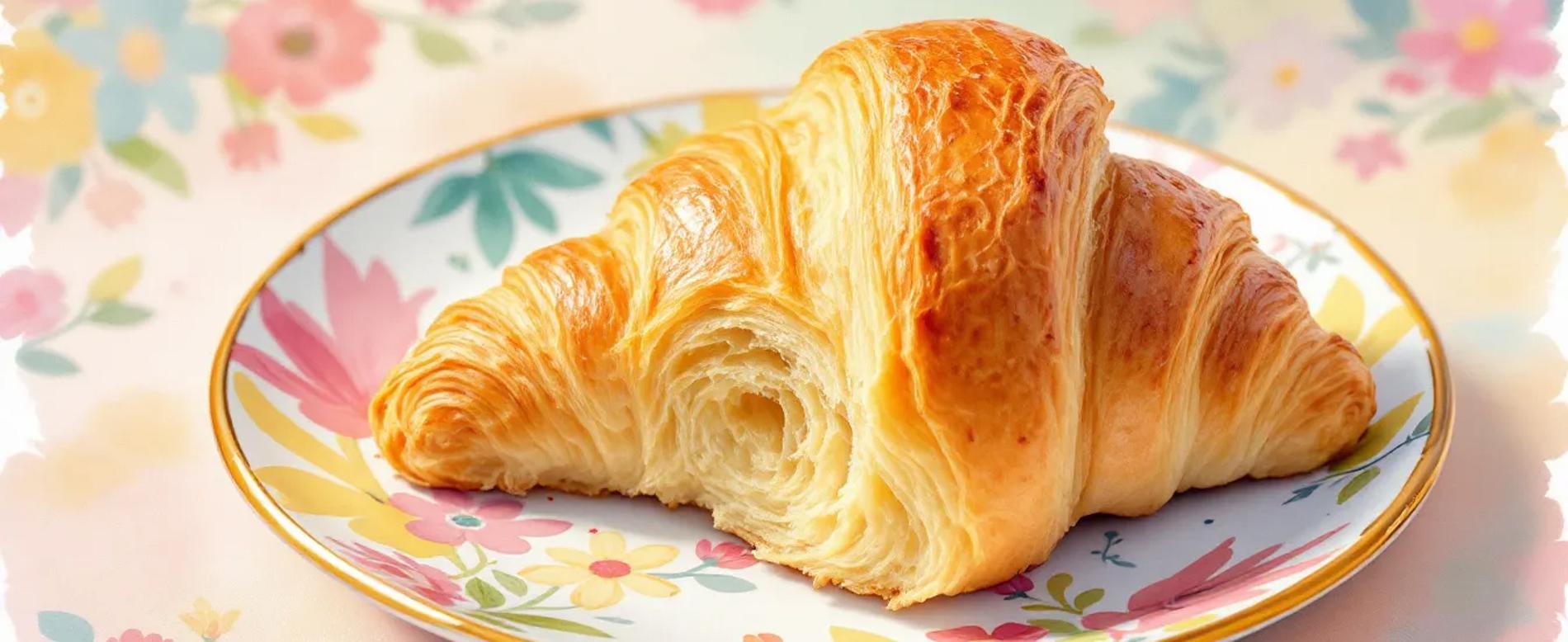
Top 15 Classic French Pastries You Must Try
Key Takeaways
Croissants, with their flaky layers and buttery texture, are a foundational French pastry created through a careful lamination process.
Profiteroles and éclairs, both made from choux pastry, showcase the versatility of fillings and toppings, often featuring rich creams and glossy ganache.
Classic desserts like mille feuille, tarte Tatin, and baba au rhum highlight the depth of French pastry-making traditions, combining history with indulgent flavors.
The Iconic Croissant
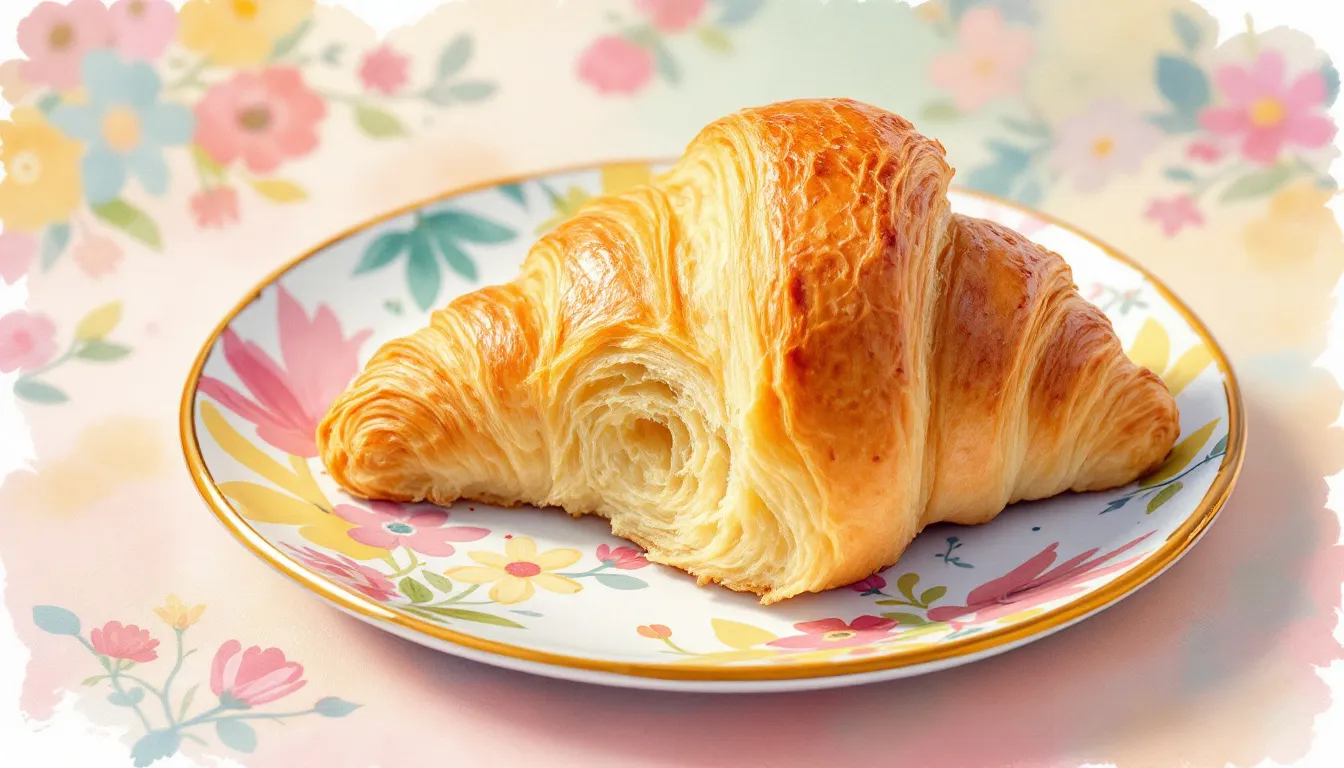
When one thinks of French pastries, the croissant undoubtedly comes to mind first. This iconic treat, with its golden, flaky exterior and buttery layers, is a staple in French patisseries. The secret to a perfect croissant is lamination, where solid butter is folded and rolled into the dough repeatedly, forming a thin layer of flaky pastry. This meticulous process ensures that the dough doesn’t become bready but remains light and airy.
As the croissants bakes, the water in the butter turns to steam, causing the pastry to puff up and form its characteristic honeycomb structure. The result is a symphony of textures: crisp on the outside, tender and flaky on the inside. A perforated baking sheet can enhance air circulation, helping each croissant bake evenly and retain its delicate structure.
Whether enjoyed plain, with a dollop of jam, or filled with savory delights, the croissant is a testament to the beauty of French baking. It’s no wonder that this buttery pastry has become a beloved breakfast staple around the world.
Profiteroles with Chocolate Ganache
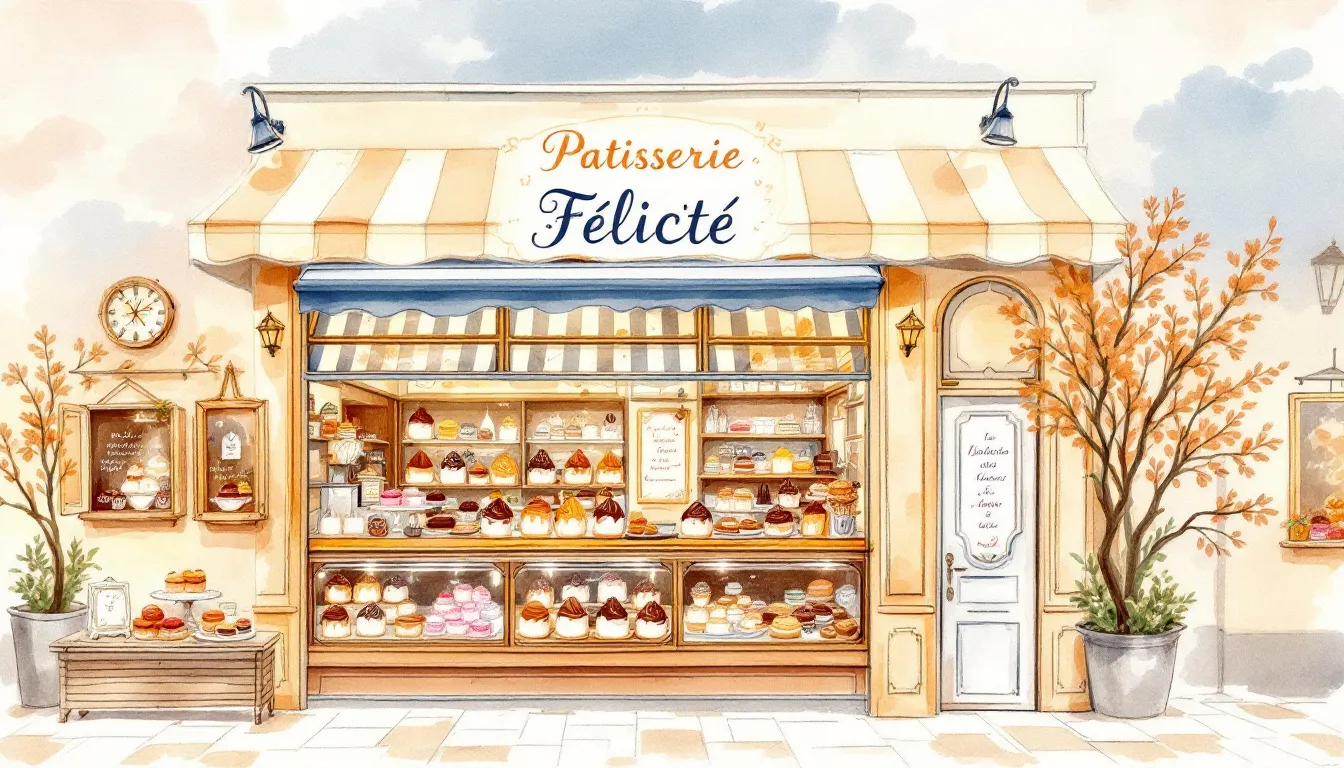
Next on our list are profiteroles, delightful cream puffs filled with luscious fillings and often topped with rich chocolate ganache. The name profiterole comes from the French word meaning ‘small profit’ or ‘gratification,’ reflecting the sheer pleasure these treats bring.
The foundation of profiteroles is choux pastry, a marvel of culinary engineering invented by the Italian chef Panterelli and later refined in France. Chef Antoine Carême made the idea of filling choux pastries with cream popular, giving us the classic cream puff.
Profiteroles can be filled with a variety of sweet options, including whipped cream, custard, or even vanilla ice cream. Filled profiteroles are often topped with glossy chocolate ganache or powdered sugar, adding to their beauty and taste.
Mille Feuille Masterpiece
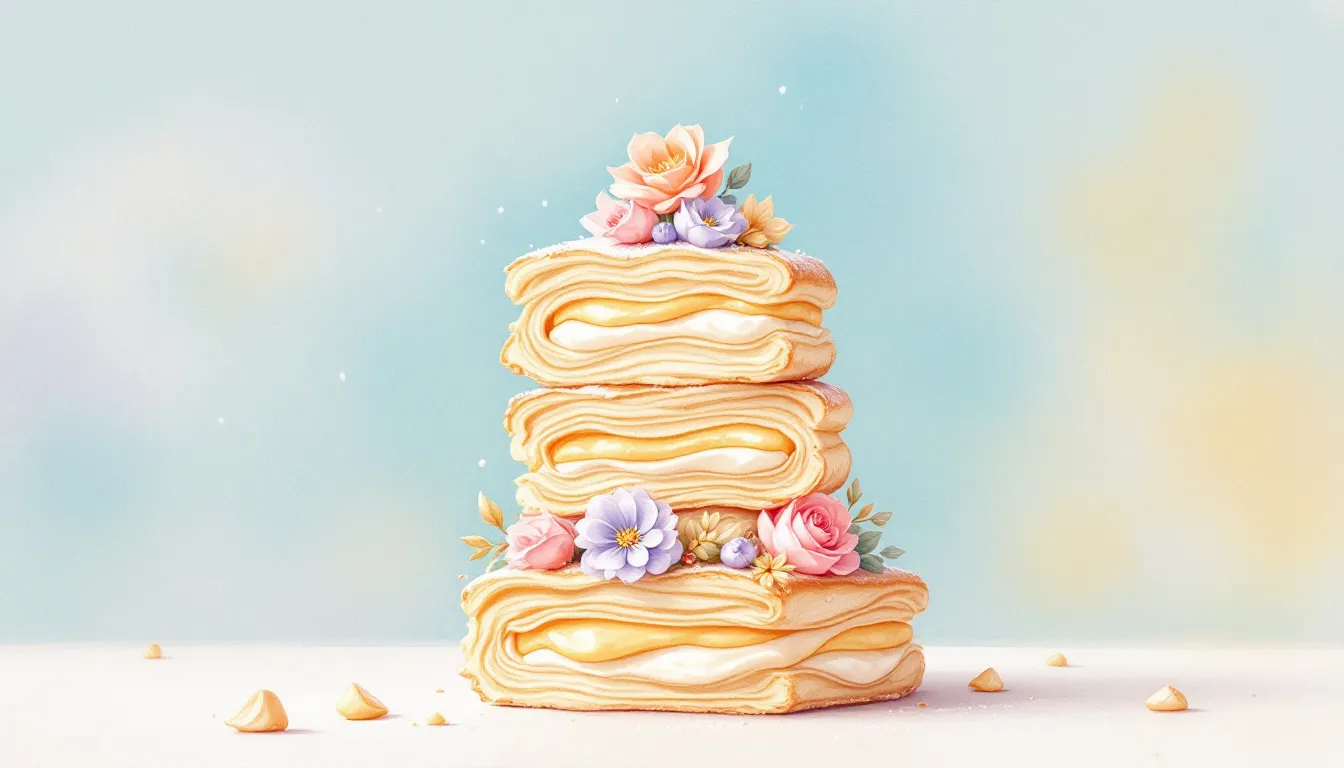
The mille feuille, or ‘thousand leaves,’ is a true masterpiece of French pastry. Created by the famous pastry chef Adolphe Seugnot in the 19th century, this classic dessert is a marvel of layered perfection. Traditionally, a mille feuille consists of three layers of puff pastry, separated by two layers of rich pastry cream.
The delicate balance of textures and flavors makes the mille feuille a favorite among pastry lovers. It’s typically finished with a dusting of powdered sugar on top, adding a touch of sweetness and elegance. In some variations, a fondant icing with chocolate lines is used to create a beautiful marbled effect.
Whether referred to as a mille feuille or a napoléon, this dessert is a testament to the art of French pastry making.
Traditional Eclairs
Éclairs are another quintessential French pastry that has captured the hearts of dessert lovers worldwide. These elongated pastries, made from choux dough, are filled with creamy custard and topped with a shiny layer of chocolate ganache. The origins of the éclair are somewhat debated, but it is widely believed that the renowned chef Carême played a significant role in popularizing them. French desserts like éclairs continue to delight people around the globe, showcasing the variety of delicious desserts available.
Making the perfect éclair involves key steps: thoroughly cooking the choux paste for the right shell consistency, ensuring the batter is glossy and flows slowly off the beater, and brushing the éclair shells before baking for smoother surfaces and even expansion. If the shells are not crisp enough after cooling, they can be returned to a hot oven to improve their texture.
Baked éclair shells can be frozen and reheated directly from the freezer, preserving their quality and convenience. Enjoyed fresh or prepared in advance, éclairs are delightful and epitomize the elegance of French pastries.
Paris-Brest Delight
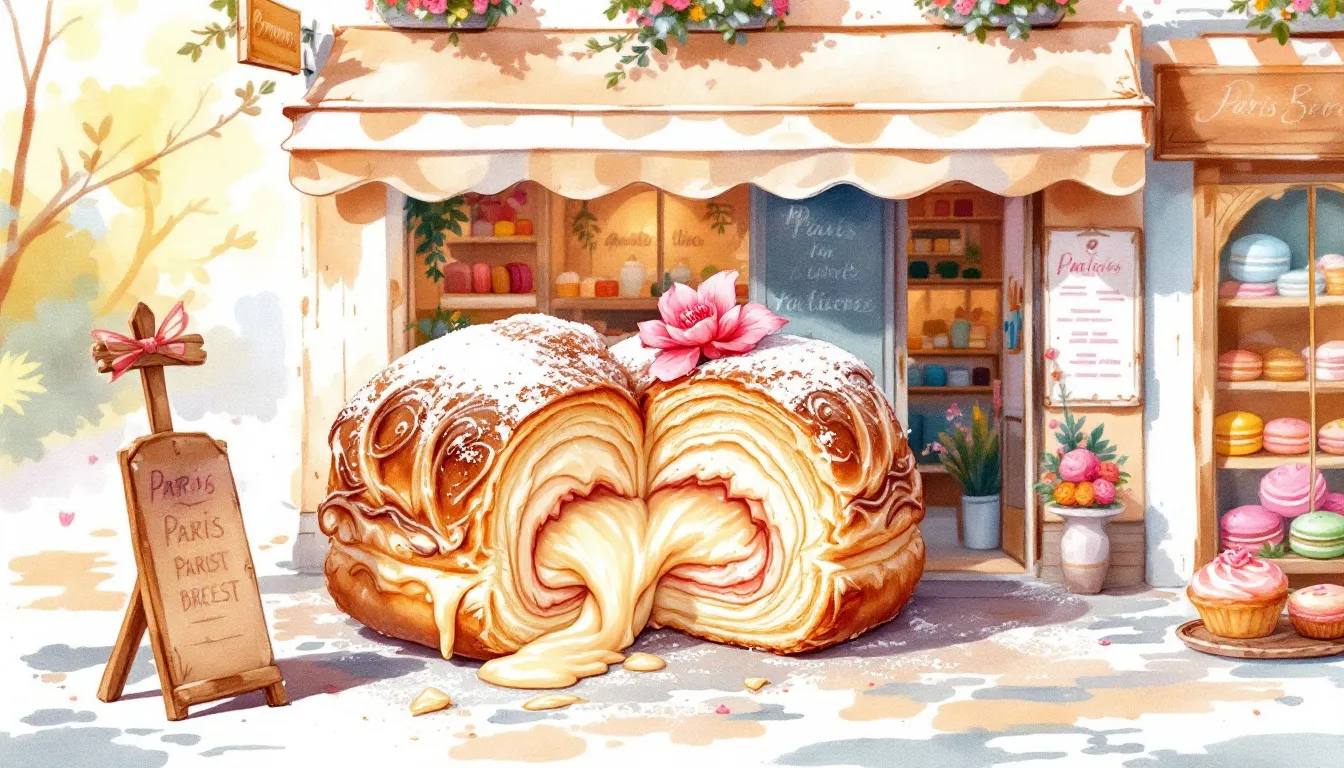
The Paris-Brest is a delightful pastry with a rich history, originally created in 1910 to commemorate the Paris–Brest–Paris cycling race. Its circular shape is designed to resemble the wheels of a bicycle, making it a whimsical and symbolic treat.
This pastry is made from choux pastry formed into a ring and filled with a luscious praline cream, giving it a unique nutty flavor. The Paris-Brest is often topped with flaked almonds and a dusting of powdered sugar, adding both texture and visual appeal. It’s a deliciously indulgent dessert that combines tradition and taste in every bite.
Pain au Chocolat Perfection
Pain au chocolat, also known as chocolate croissant, is another beloved French pastry that offers a delightful twist on the traditional croissant. This pastry is made from yeast-leavened dough, similar to puff pastry, with a rich chocolate filling placed in the center.
Often enjoyed warm, pain au chocolat is a popular breakfast or mid-day treat. Sold alongside croissants in bakeries, this buttery, chocolate-filled pastry exemplifies French culinary expertise and indulgence. Many people also enjoy a variety of chocolates with their coffee.
Fluffy Cream Puffs
Cream puffs, or choux à la crème, are delightful French pastries known for their light, airy texture and creamy filling. The key ingredient in cream puffs is salted butter, which adds a subtle richness to the dough. The choux pastry is piped into small rounds and baked until puffed and golden, creating a hollow center perfect for filling.
Typically filled with whipped cream, these puffs are a decadent treat for any occasion. The custard and chocolate sauce can be refrigerated for up to three days, keeping your cream puffs fresh and delicious.
Cream puffs, enjoyed plain or with powdered sugar, are incredibly easy and a timeless classic that always impresses.
Tarte Tatin Wonder
Tarte Tatin, a classic French dessert, has a charming backstory that adds to its allure. It was created by accident at the Hôtel Tatin in Lamotte-Beuvron, France, by the Tatin sisters. This delightful tart features caramelized apples baked beneath a layer of pastry, creating a beautiful upside-down tarts.
Apples are cooked in sugar and butter until deeply caramelized, pairing perfectly with the flaky puff pastry base. Tarte Tatin is traditionally served warm, often accompanied by a scoop of vanilla ice cream, making it a comforting and delicious dessert.
Heavenly Macarons
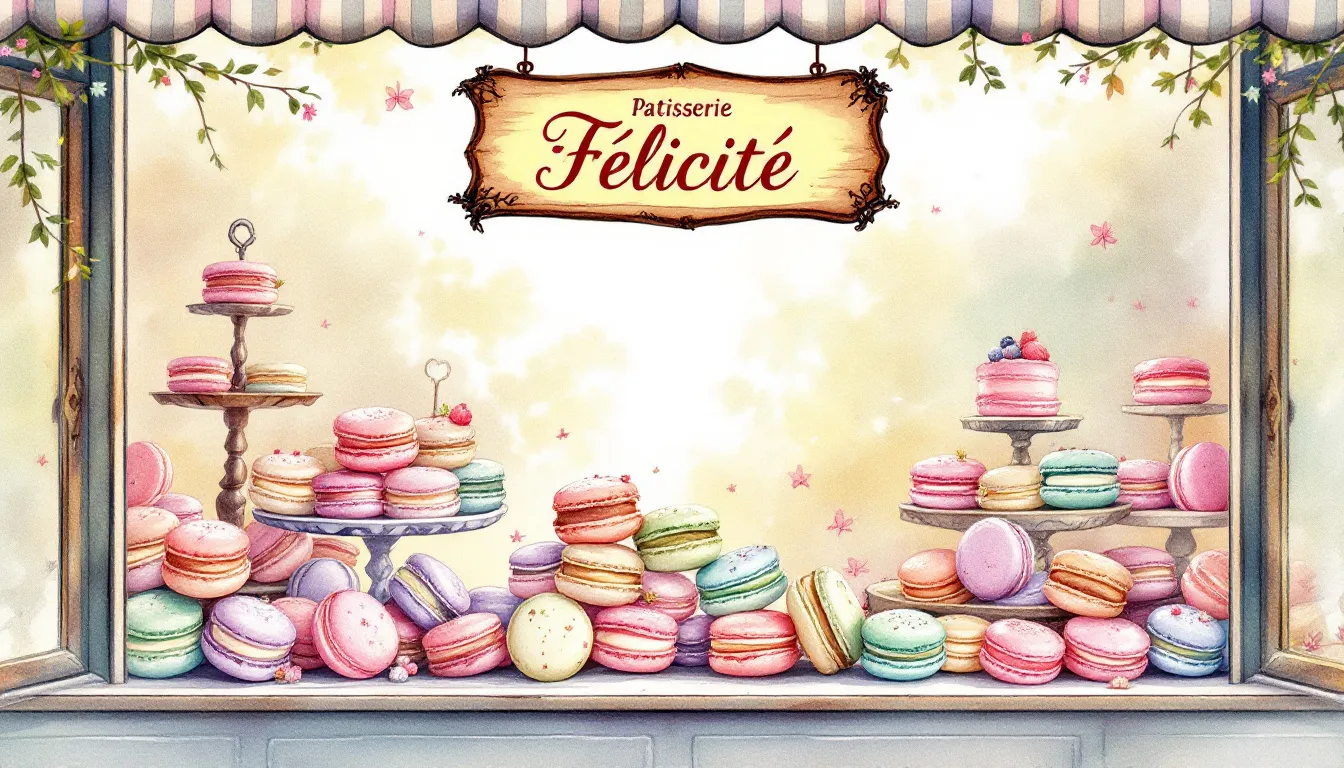
Macarons are delicate, colorful confections that have become synonymous with French pastry elegance. Known for their delicate crunch and chewy center, macarons made from almond meringue pair perfectly with fillings like dark chocolate ganache, jam, or caramel sauce.
Catherine de Medici is credited with introducing macarons to France, but Ladurée in the 1870s and later Pierre Hermé elevated them to haute couture status.
Macarons can be made in advance and frozen, allowing for convenient storage and anytime enjoyment.
Quatre-Quarts (French Pound Cake)
Quatre-quarts, or French pound cake, is a simple yet delightful dessert that gets its name from the equal ratio of its main ingredients: flour, sugar, eggs, and butter, which can be thought of as four fourths. Bakers often weigh the eggs and use that weight to measure equal parts flour of the other ingredients, ensuring consistency and balance in the cake.
Traditionally made plain, quatre-quarts showcases the natural taste of its ingredients that have been tasted. Variations may include rum, vanilla, or citrus zest, and it can be topped with nuts, fruit, or glazes. This classic dessert is a delightful recipe that highlights its components.
Whipped egg whites create air, helping the cake rise during baking without chemical leaveners.
Kouign-Amann Indulgence
Kouign-Amann, translating to ‘butter cake’ in Breton, is a pastry that lives up to its name with its generous use of butter and sugar. Made from a dough that incorporates equal parts of butter and sugar, this pastry is known for its sweet, caramelized exterior and buttery, flaky layers.
Repeated folding and rolling, similar to puff pastry, creates a decadent treat that is both crisp and tender. Kouign-Amann is a true indulgence that showcases the richness and creativity of French pastries.
Floating Islands Dessert
Floating Islands, or îles flottantes, is a classic French dessert that features poached meringues served on a base of vanilla-flavored crème Anglaise. This delicate dessert has its origins in the 17th century and was popularized by the renowned chef Auguste Escoffier.
Shaped into egg-like forms using spoons dipped in cold water, poached meringues are cooked without lifting the lid to maintain steam. They are often topped with spun sugar for decoration.
Floating Islands are typically served chilled or at room temperature, making them a refreshing and elegant dessert.
Grand Marnier Soufflé
The Grand Marnier soufflé is a light and fluffy French dessert that combines the rich flavor of orange liqueur with a delicate, airy texture. The name ‘soufflé’ comes from the French word for ‘to puff,’ reflecting the dessert’s characteristic rise. Marie-Antoine Carême, a prominent French chef, is credited with popularizing the soufflé in the early 19th century.
Properly preparing ramekins by buttering and sugaring is crucial for the soufflé’s rise. Room temperature egg whites help achieve maximum volume and stability.
Serve the soufflé immediately after baking to preserve its delicate structure and airy texture. A side of crème anglaise or a drizzle of warm Grand Marnier sauce adds indulgence.
Clafoutis with Fresh Fruit
Clafoutis is a rustic French dessert that originates from the Occitan word ‘clafir,’ meaning ‘to fill’. Traditionally made with cherries, clafoutis features a custard-like texture that pairs beautifully with seasonal fruits. Variations can include apricots, plums, or even raspberries, as used in Alix de Montille’s raspberry clafoutis.
Made from simple ingredients, the batter envelops the fruit, blending flavors and food styling textures harmoniously. Clafoutis can be enjoyed warm or at room temperature, suiting any occasion.
Baba au Rhum Extravaganza
Baba au rhum is a delightful yeasted cake soaked in a rum syrup, offering a boozy and indulgent treat perfect for special occasions. The cake itself is made with a homemade brioche-like batter, resulting in a light and airy texture that absorbs the syrup beautifully. This infusion of rum gives the baba au rhum its distinctive flavor, often enhanced with an orange-infused syrup to add a citrusy note.
Some variations include an extra drizzle of rum at the table for an additional kick. The syrup’s sweetness and the cake’s richness make baba au rhum a standout dessert, ideal for dinner party or celebrations.
Summary
As we conclude our journey through the world of classic French pastries, it’s clear that each pastry tells a unique story of culinary artistry and tradition. From the buttery and flaky croissant to the indulgent baba au rhum, these pastries are a testament to the skill and creativity of French patissiers. Their diverse flavors, textures, and presentations offer something for every palate, making them beloved around the world.
We hope this exploration has inspired you to try these delectable treats, whether by visiting a local patisserie or attempting to recreate them at home. The beauty of French pastries lies not only in their taste but also in the joy they bring to those who savor them. Bon appétit!
Frequently Asked Questions
What makes French pastries unique?
French pastries stand out due to their meticulous preparation, delicate textures, and rich flavors, with techniques like lamination and the use of choux pastry highlighting the intricate skill involved in their creation.
How do I achieve the flaky texture of a croissant?
To achieve the flaky texture of a croissant, focus on the lamination process by folding and rolling butter into the dough repeatedly to create thin, layered structures. This method is crucial for developing the signature flakiness.
Can I freeze French pastries like éclairs and macarons?
Yes, you can freeze French pastries like éclairs and macarons. Properly freezing éclairs and macarons allows you to enjoy their quality even after thawing.
What is the difference between a mille feuille and a napoléon?
The primary difference is that mille feuille strictly consists of three layers of puff pastry and two layers of pastry cream, whereas napoléon can include variations in ingredients and preparation. Thus, while they may appear similar, their composition and methods can differ significantly.
What fruits can be used in a clafoutis?
Clafoutis is traditionally made with cherries, but you can also use apricots, plums, and raspberries for delightful variations. Selecting your favorite fruit can enhance the dish to your personal taste.

